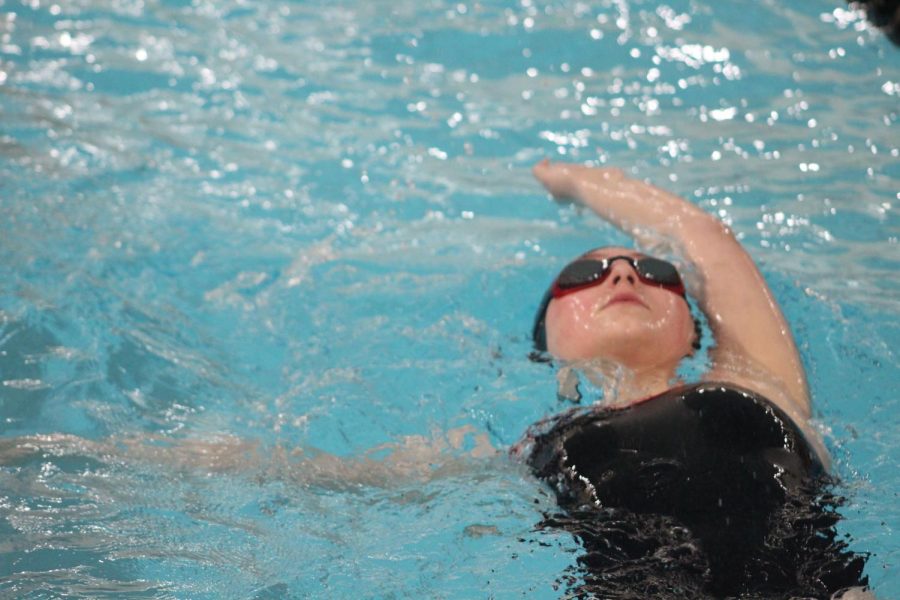5 weird facts about competitive swimming
what most people don’t know competitive swimming
March 11, 2020
Male and female swimmers shave
It’s known that female swimmers shave when it comes to meets and competitions. But some males do it as well. According to Your Swim Book, it’s been experimented with, and it’s been concluded that the swimmers that shaved went further and faster, and much drag was reduced during the race. Shaving removes dead skin Not only does shaving help the swimmer go faster, it helps them mentally prepare themselves mentally. The shaved body helps them mentally prepare themselves for the race they have ahead of them by taking their mind off the extra drag from the excess body hair.

Swimmers sweat in the pool
It’s a common assumption that swimmers don’t sweat since they’re in the water. But that fact isn’t true. According to SwimmerPro, swimmers sweat just like every other athlete. Sweating is your body’s way of cooling itself when you start to overheat from high intensity workouts like swimming. Swimming especially can cause your temperature to skyrocket; and because of this, swimmers have to stay extremely hydrated during their practices and meets. Keeping up with water and electroltrolyes is very important, and not just for swimmers, but for all athletes as well. A good way to get your electrolytes up easily is by eating bananas, oranges potatoes, yogurt, and drinking milk.

Swimmers train for hours upon hours during the week to compete in a short race
Competitive swimmers, including olympic swimmers, sometimes practice more days than there are in a week. Swimmers practice for several hours each day to drop even the smallest amounts of time in their events. Improving your personal time is the main goal of competitive swimming. The longest race for a high school swim meet is the 500 freestyle, which lasts as long as it takes you to swim. But for the shorter races like the 200 IM (Individual Medley), 200 freestyle, 100 butterfly, 100 backstroke, or the 50 freestyle, these races last a couple of minutes, sometimes under a minute, and dropping even a second or two is a big win for the swimmer.

Swimmers exercise outside the pool
The exercise outside of the pool that swimmers do is called dryland. Yes, it’s true. Swimmers do exercise outside of the pool. It could be any workout from running, to jumping jacks, to even yoga. Dryland helps build the muscles in different ways to give them an opportunity to grow in a different way other than just swimming. Dryland is beneficial in many different ways. Even though going straight from dryland to swimming right after is extremely painful, the outcome is worth it. The stronger you are, the faster you’ll swim. The faster you swim, the more time you’ll drop.

Swimming uses every muscle in your body
Like cardio, swimming is a full body workout. With in and out of water training, every muscle in the swimmers body is being put to use. Every stroke uses different muscles in a different way. Freestyle and backstroke pull and push against the water. These strokes mainly focus on arms, abs, and legs. Breaststroke and butterfly focus a lot more on shoulders, biceps, abs, and chest. No matter what stroke you’re swimming, whether it be at a meet or practice, every muscle will be used and pushed to or beyond its limits.



